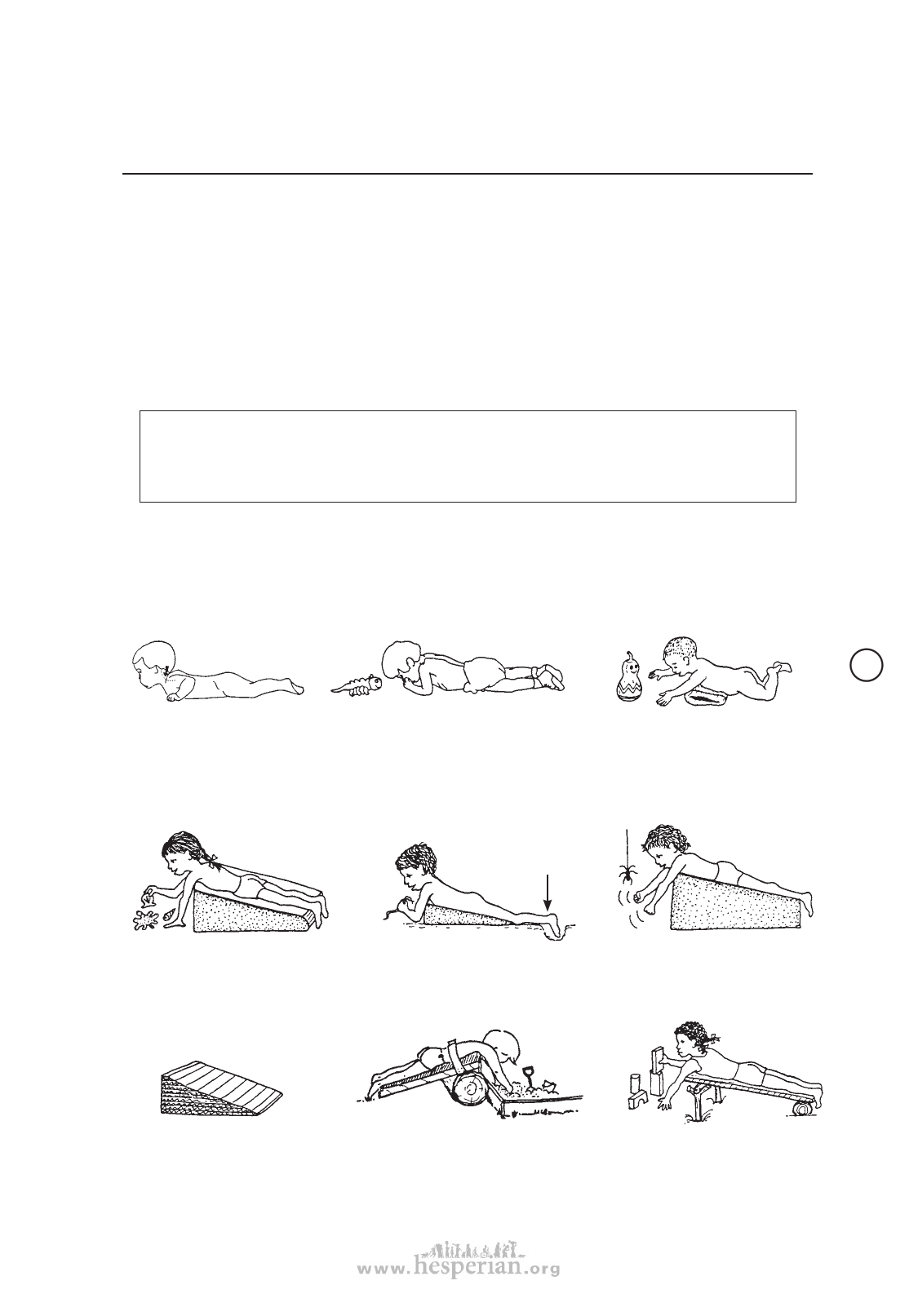
Developmental Aids
62CHAPTER
571
In this chapter we look at the design details of aids for lying, sitting, standing,
balance, use of hands, and communication. Aids for walking are in Chapter 63.
Whether or not a particular child needs an aid, and what kind of aid she needs,
must always be carefully and repeatedly evaluated. An aid that helps a child at one
level of development may actually hold her back at another. When considering aids,
we suggest you first read the chapters on child development, those covering the
particular disability of the child, and Chapter 56.
Note: Many developmental aids have already been shown in PART 1 of this book, especially
in Chapter 9 (cerebral palsy), and in Section C, on child development. Aids and equipment
for play and exercise are in PART 2, Chapter 46 (Playgrounds). Wheelboards and wheelchairs
are in Chapters 64, 65, and 66.
Lying aids
Lying face down is a good position for a child to begin to develop control of the
head, shoulders, arms, and hands, and also to stretch muscles in the hips, knees, and
shoulders. However, some children have difficulty in this position. For example:
Rosa cannot lift her
shoulders. She has
to bend her neck far
back to lift her head.
Juan does not have
enough control and
balance to reach out
his arms.
A firm pillow under the
chest may help both these
children to lift their heads
better and to reach out.
A ‘wedge’ or slanting support is often helpful. The height depends on the
needs of the particular child.
Letting feet hang
down helps prevent
tiptoe contractures.
CP
Diana manages best on a wedge
high enough so that she can lift
herself up a little at arms length.
(Height is the length from wrist
to armpit.)
Wedges can be made with:
Cassio does better on a
lower wedge, so he can lift
up on his elbows. (Height
is slightly less than length
from elbow to armpit.)
Carmen and others with little or
no arm or hand control do best
when their arms can dangle. She
can see them moving when she
moves her shoulders.
stiff foam plastic or
layers of cardboard
a log and a board with
a soft foam cover
a stick frame